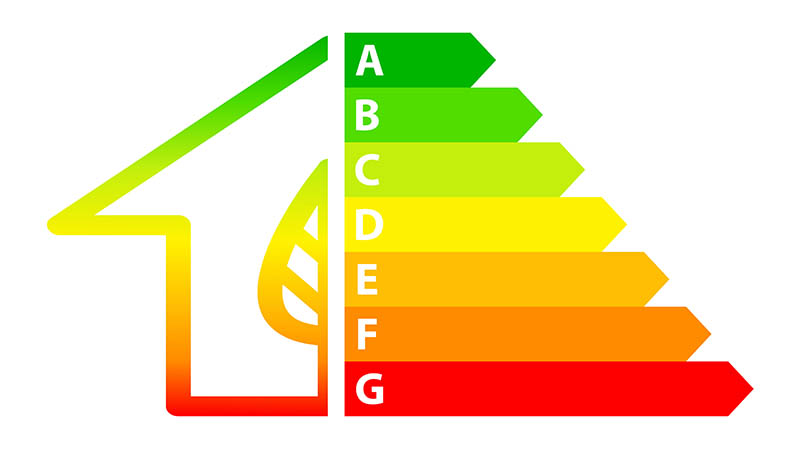The latest research from Warwick Estates reveals how new build homes can see homebuyers cut their energy bills by as much as 60%.
Now that winter has arrived, running a home is set to become more expensive than during any other time of year due to vastly increased heating and utility bills. One of the most appealing factors of new build homes is that their increased energy efficiency means that these bills will be lower than they are for older, existing homes. But by how much?
Warwick Estates looked at the energy costs associated with running both new and existing homes on an annual basis and how the two compare to see where new build homes can save homebuyers the most on their energy bills.
In England, energy bills for an existing property cost an estimated £797 per year. For a new build property, annual energy bills cost just £390, a difference of £407, or 51.1%. New builds can save homebuyers the most on their energy bills in the North West of England, where the annual energy bill for a new build home comes in at 52.4% less than an existing property.
In Wales, heating an existing home is even more expensive at an average of £852 per year, while heating a new build in Wales costs £412, a saving of £440 or 51.6%.
On a more localised level, the list of places where there is the biggest difference between energy costs for new build homes and existing homes is topped by two London locations – Harrow and Redbridge. In both boroughs, brand new homes are 60.1% cheaper than existing properties, followed closely by Malvern Hills (59.9%) and West Devon (59%).
COO of Warwick Estates, Bethan Griffiths, commented: “The energy efficiency difference between new-build homes and older, existing properties is stark. Improved insulation technologies, better windows, smart meters, and more, all contribute to a notable saving every year.
“Not only does this increased efficiency save the homeowner and occupier large sums of cash, but it also significantly reduces the home’s carbon footprint. So there is a far wider benefit than our bank accounts alone.”
Eastman Village
The top ten areas in England and Wales for energy cost savings for new build homes versus existing homes:
1. Harrow (new build median energy cost £328, saving on existing property 60.1%). Example development: Eastman Village, Barratt London. Taking shape on the former Kodak factory site, this major development will deliver over 2,000 when completed. Right now, there’s a reange of one- and two-bedroom apartments for sale from £296,000. Selected units can be purchased with London Help to Buy.
2. Redbridge (new build median energy cost £314, saving on existing property 60.1%). Example development: Seven Kings, Redbridge Living. The council’s wholly owned development company is currently consulting on this mixed-use development which will combine community, council and health facilities with a range of homes, of which at least 35% will be in ‘affordable’ tenures.
3. Malvern Hills (new build median energy cost £398, saving on existing property 59.9%). Example development: Malvern Rise, Persimmon Homes. Set in the well-served, historic spa town of Malvern, this development currently offers a variety of two-, three- and four-bedroom homes priced between £242,000 and £385,000.
4. West Devon (new build median energy cost £409, saving on existing property 59.0%). Example development: Green Valley Meadow, Home Reach. With the Home Reach ‘part buy-part rent’ scheme, it’s possible to buy a 50% share of a two-bedroom home for £125,000 (based on a full market value of £250,000). It’s a well-connected village an easy drive from the likes of nearby Okehampton and Tavistock.
5. Ryedale (new build median energy cost £446, saving on existing property 58.9%). Example development: Derwent Green, Duchy Homes. This development is located in the peaceful conservation area of Old Malton and will comprise 40 homes, with a variety of two-, three-, four- and five-bedroom types. It is 85% sold and prices start at £405,999 for a two-bedroom bungalow.
6. Solihull (new build median energy cost £366, saving on existing property 58.8%). Example development: Woodlands Park, Home Reach. Part of the successful Blythe Valley Park development, five miles from the town centre, this development has one remaining one-bedroom apartment on the Home Reach initiative, priced at £94,500 for a 50% share (full market price £189,000).
7. Derbyshire Dales (new build median energy cost £431, saving on existing property 58.3%). Example development: Cotton Yard, Avant Homes. This is a development of 75 two-, three-, four- and five-bedroom homes located in Brailsford, around 15 minutes from Ashbourne and Derby. Prices currently range from £279,950 to £474,950.
8. Forest of Dean (new build median energy cost £406, saving on existing property 57.8%). Example development: Mirum Park, Crest Nicholson. Combining a rural location with great transport connectivity, this-edge-of-town development in Allastone has shops and good schools within walking distance. Part Exchange and Smoothmove schemes are available on selected plots of the available two- and three-bedroom homes, priced from £210,000 to £275,000.
9. Wirral (new build median energy cost £367, saving on existing property 57.8%). Example development: Queensbury Manor, Castle Green Homes. Currently available here is the spacious, high-specification four-bedroom ‘Buckingham’ house priced at £684,995, one of just 25 homes at this exclusive development in Meols.
10. Gwynedd (new build median energy cost £454, saving on existing property 57.5%). Example development: The Abersoch, Fine & Country. This is a highly exclusive contemporary collection of luxury two- and three-bedroom apartments with sea views and private terraces in Bangor, with prices currently ranging from £675,000 to £1.5million.
Full tables from Warwick Estates here:

